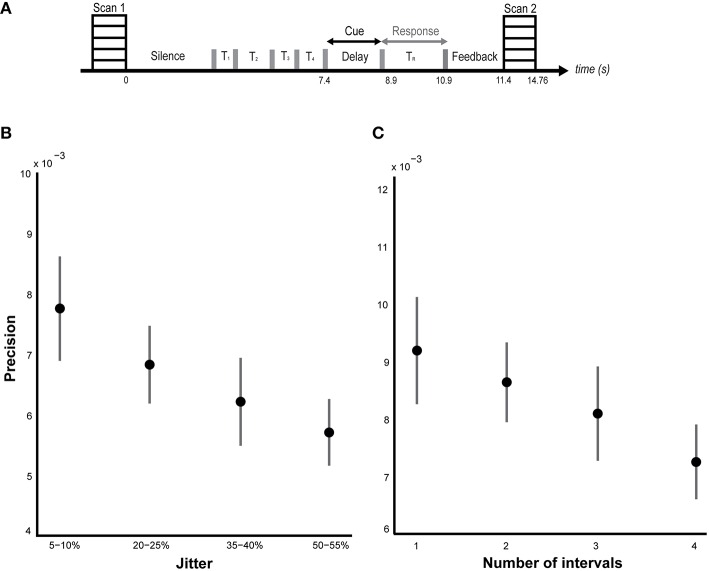Figure 1.
Behavioral results. (A) Task and sparse imaging paradigm. Listeners are presented with a sequence of time intervals (4 intervals in the jitter condition and 1–4 intervals in the number-of-intervals condition) separated by clicks (indicated by the gray bars). At the end of the sequence, a probe is presented during the delay period (2 s) indicating the interval to be reproduced. Another click is played after the delay indicating the start of the reproduction interval which listeners are required to terminate at a point in time that corresponds to their memory of the probed interval. Feedback, equal to the difference between the reproduced interval and the actual duration of the probed interval is presented for 500 ms at the end of each trial. The task structure and timing is shown between two successive volumes in the sparse imaging design. (B) Performance on jitter blocks. Listeners' performance (n = 18) was calculated as the precision of the timing error distribution. The mean precision (± SEM) is plotted as a function of temporal regularity, varying from 5–10% jitter to 50–55% jitter as indicated on the x-axis. A significant effect of jitter (p = 0.02) on precision was observed (see results). (C) Performance on number of intervals blocks. Listeners' (n = 16) mean precision (± SEM) is plotted against the number of intervals on the abscissa. No significant effect of memory load (p = 0.36) was found (but see results).

